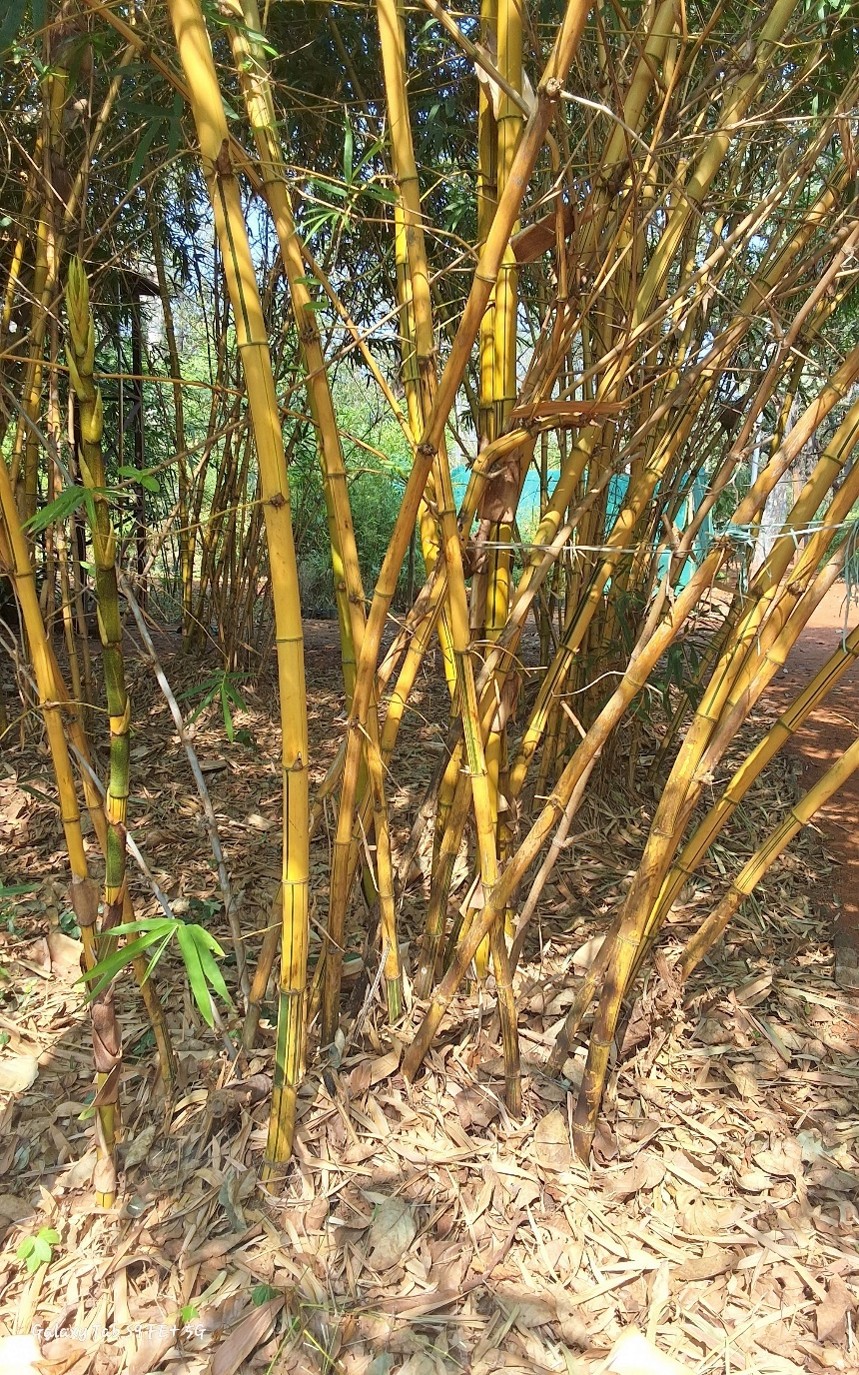Bambusa vulgaris var. striata,

Bambusa vulgaris var. striata,
Bambusa vulgaris var. striata,commonly known as Striped Bamboo, Yellow-striped Bamboo, or Bamboo with Yellow Stripes, is a distinctive variety of Bambusa vulgaris. It is characterized by its clumping, dense, and erect growth, with culms that have alternating yellow and green vertical stripes, which is its most recognizable feature. The plant typically reaches a height of 8 to 15 meters and has a diameter ranging from 6 to 10 cm. The culms are green with yellow stripes, and the internode length varies from 25 to 40 cm. The culm sheath is green when young and turns yellow-brown as it matures. Its adaxial surface is smooth and glabrous, while the abaxial surface is hairy at first, becoming smooth over time. The sheath has ciliate margins. The leaves of Bambusa vulgaris var. striata are narrow-lanceolate with pointed tips, measuring 15 to 25 cm in length and 2 to 4 cm in breadth. This bamboo prefers altitudes ranging from 100 meters to 1,200 meters and thrives in well-drained loamy or sandy soils but is tolerant of clayey soils as well.
Native to tropical and subtropical regions, particularly Southeast Asia, India, and parts of China, Bambusa vulgaris var. striata is widely cultivated around the world, especially in tropical and subtropical regions including Africa, Central America, and South America, primarily for ornamental purposes. It grows best in moist, well-irrigated forests and cultivated landscapes. The bamboo produces a small panicle inflorescence with bracteate heads and spicate branching. The empty glumes are ovate, acute, and finely nervate, while the flowering glumes are larger and ciliate at the edges. The stamens are exserted with glabrous anthers, and the style is covered with fine hairs. Bambusa vulgaris var. striata flowers rarely, typically once every 30 to 50 years, and flowering has been reported in parts of India, Southeast Asia, and tropical regions. Seed production is uncommon, often sterile or non-viable, and propagation is primarily achieved through vegetative methods, including clump division, culm cuttings, offsets, and tissue culture.
This variety is highly valued in landscaping and garden decoration due to its unique appearance with striking striped culms. It is also used in construction for making poles, scaffolding, and lightweight furniture. The bamboo is commonly used in craftwork, including the creation of baskets, mats, and other bamboo items. The shoots of Bambusa vulgaris var. striata are edible and are consumed in Southeast Asian cuisine. Additionally, the bamboo is utilized in pulp and paper production and is planted for soil erosion control, particularly in tropical regions, due to its robust growth.
Listen Audio:
Need assistance? BRTC Faculty